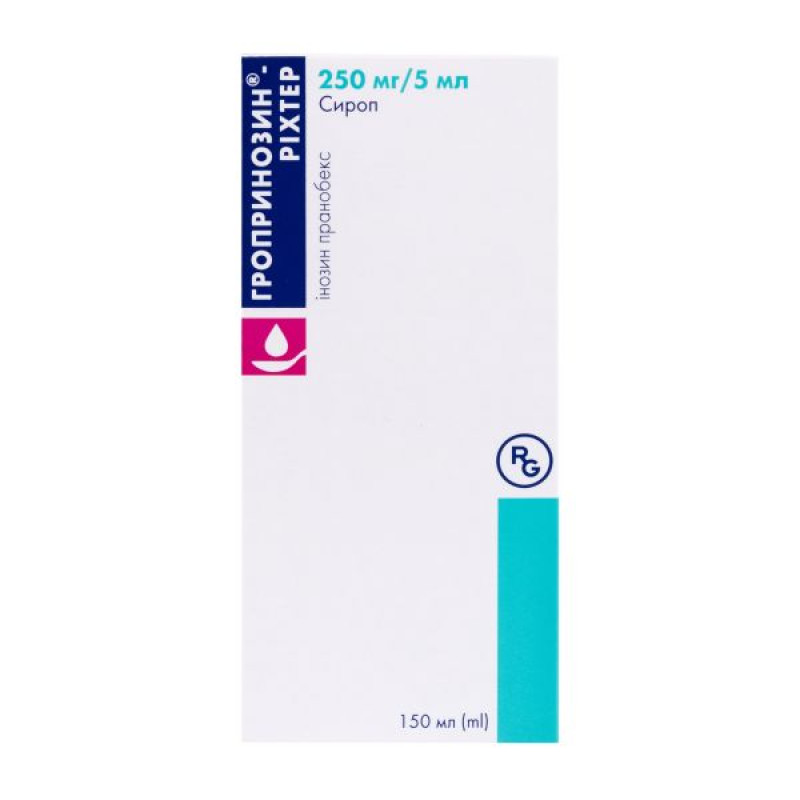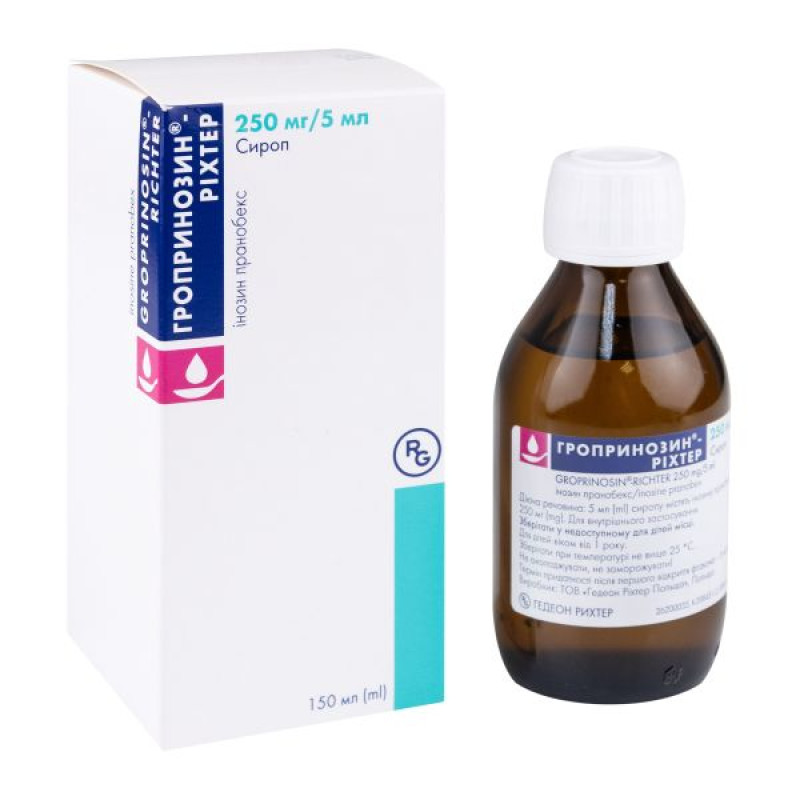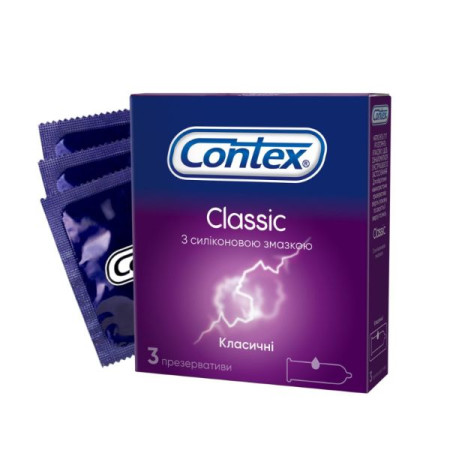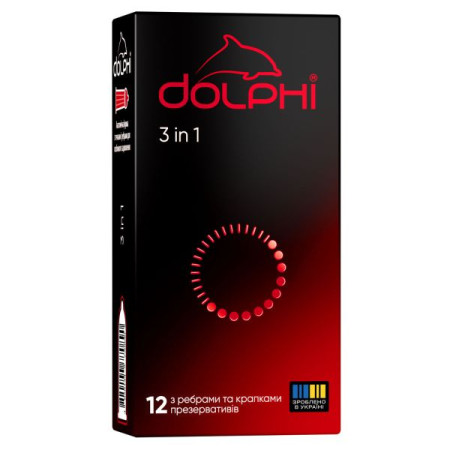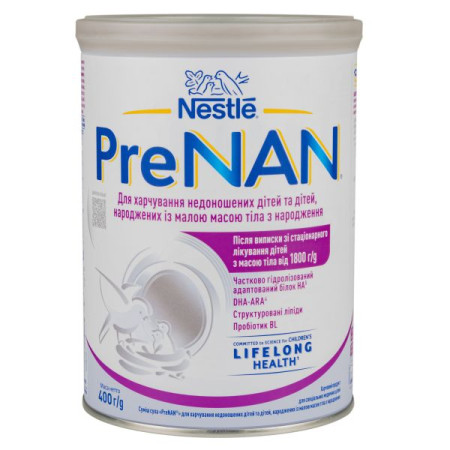Groprinosin-Richter syrup 250 mg/5 ml bottle 150 ml
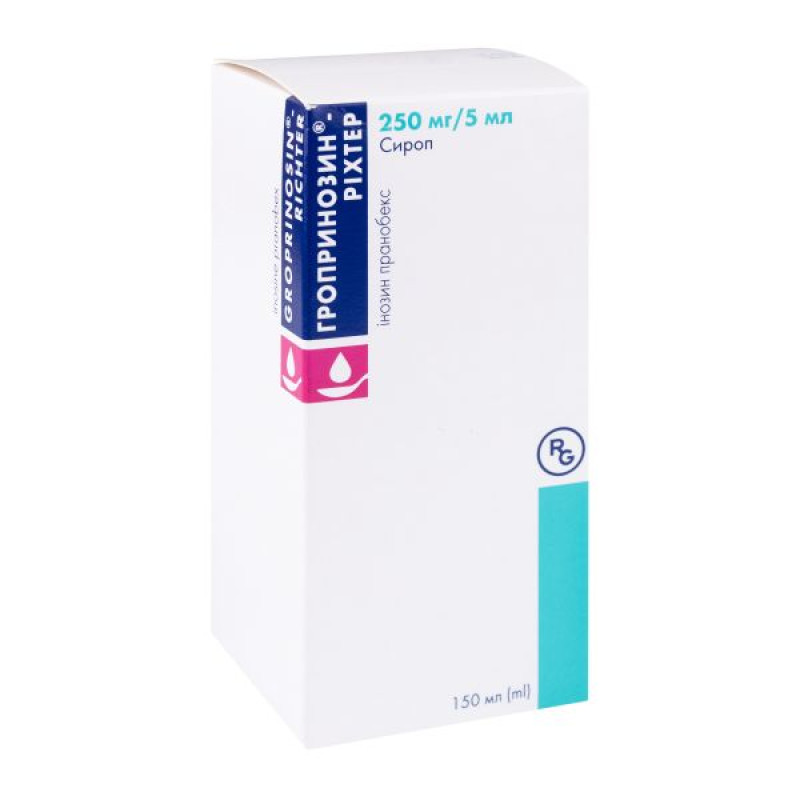
Instructions Groprinosin-Richter syrup 250 mg/5 ml bottle 150 ml
Composition
active ingredient: inosine pranobex;
5 ml of syrup contain 250 mg of inosine pranobex;
excipients: methyl parahydroxybenzoate (E 218), propyl parahydroxybenzoate (E 216), sucrose, sodium hydroxide (E 524), citric acid monohydrate (E 330), purified water.
Dosage form
Syrup.
Main physicochemical properties: clear liquid with a sweet taste.
Pharmacotherapeutic group
Antimicrobials for systemic use. Antivirals for systemic use. Direct-acting antivirals. ATX code J05A X05.
Pharmacological properties
Pharmacodynamics.
Groprinosin®-Richter is an antiviral agent with immunomodulatory properties. The drug normalizes (to an individual norm) the deficiency or dysfunction of cellular immunity, inducing the maturation and differentiation of T-lymphocytes and T1-helpers, potentiating the induction of a lymphoproliferative response in mitogenic or antigen-active cells. Groprinosin®-Richter models the cytotoxicity of T-lymphocytes and natural killers, the function of T8-suppressors and T4-helpers, and also increases the amount of immunoglobulin G and surface markers of complement. Groprinosin®-Richter increases the synthesis of interleukin-1 (IL-1) and the synthesis of interleukin-2 (IL-2), regulates the expression of IL-2 receptors. Groprinosin®-Richter significantly increases the secretion of endogenous gamma-interferon and reduces the production of interleukin-4 in the body. Groprinosin®-Richter enhances the action of neutrophil granulocytes, chemotaxis and phagocytosis of monocytes and macrophages. Groprinosin®-Richter inhibits virus synthesis by incorporating inosine-orotic acid into the polyribosomes of virus-infected cells and inhibits the attachment of adenylic acid to viral mRNA.
Pharmacokinetics.
After taking the drug orally at a dose of 1.5 g, the maximum concentration of inosine pranobex in the blood plasma is reached after 1 hour and is 600 μg/ml. In the body, inosine pranobex is metabolized in the liver with the formation of uric acid. The half-life of 4-(acetylamino)benzoate is 50 minutes, 1-(dimethylamino)-2-propanol - 3.5 hours. It is excreted by the kidneys in the form of metabolites.
Indication
Viral infections caused by herpes simplex virus types 1 and 2, varicella virus, cytomegalovirus, Epstein-Barr virus, measles virus, mumps virus, including in patients with immunodeficiency states;
viral respiratory infections;
papillomavirus infections of the skin and mucous membranes: genital warts, papillomavirus infection of the vulva, vagina and cervix (as part of complex therapy);
acute viral encephalitis (as part of complex therapy);
viral hepatitis (as part of complex therapy);
subacute sclerosing panencephalitis (as part of complex therapy).
Contraindication
Hypersensitivity to the active substance or to any of the excipients of the medicinal product, exacerbation of gout, hyperuricemia.
Interaction with other medicinal products and other types of interactions
Caution should be exercised when prescribing the drug with xanthine oxidase inhibitors (e.g. allopurinol) or agents that promote the excretion of uric acid, including diuretics, in particular thiazide diuretics (such as hydrochlorothiazide, chlorthalidone, indapamide) or loop diuretics (e.g. furosemide, torasemide, ethacrynic acid).
Groprinosin®-Richter can be used after, but not simultaneously with, immunosuppressants, as there may be a pharmacokinetic effect on the desired therapeutic effects.
When used simultaneously with azidothymidine (zidovudine), the formation of azidothymidine nucleotide is increased by multiple mechanisms, including increased bioavailability of azidothymidine in blood plasma and increased intracellular phosphorylation in human blood monocytes. This leads to an increase in the effects of zidovudine under the influence of Groprinosin®-Richter.
Application features
During treatment with Groprinosin®-Richter, a short-term increase in serum and urine uric acid levels may occur, but they usually remain within normal limits (up to the upper limit of normal of 8 mg/dl or 0.420 mmol/l, respectively), especially in elderly patients of both sexes and men. The increase in uric acid levels is a result of the catabolic metabolism of inosine in the body and is not a result of changes in enzyme activity or renal clearance caused by the use of drugs. Therefore, Groprinosin®-Richter should be used with caution in patients with gout, hyperuricemia, urolithiasis and a history of renal dysfunction. Patients should closely monitor uric acid levels during treatment.
With long-term use of the drug (more than 3 months), it is advisable to regularly check laboratory indicators of liver and kidney function (transaminases, creatinine), uric acid levels in blood serum and urine, and perform a blood test.
With prolonged use of the drug, there is a risk of stone formation in the ureters.
Excipients of the drug.
The drug Groprinosin®-Richter, syrup, contains methyl parahydroxybenzoate and propyl parahydroxybenzoate, which may cause allergic reactions (possibly delayed).
Groprinosin®-Richter syrup contains sucrose. Patients with rare hereditary problems of fructose intolerance, glucose-galactose malabsorption or sucrase-isomaltase insufficiency should not take this medicine.
1 ml of Groprinosin®-Richter syrup contains 650 mg of sucrose. This should be taken into account by patients with diabetes.
Sucrose can be harmful to teeth.
This medicinal product contains less than 1 mmol (23 mg) sodium per 80 ml, i.e. essentially sodium-free.
Use during pregnancy or breastfeeding
Controlled studies of fetal health and fertility in humans are lacking. It is not known whether inosine pranobex is excreted in human milk. The drug should not be used during pregnancy or breastfeeding.
Ability to influence reaction speed when driving vehicles or other mechanisms
Groprinosin®-Richter has no or negligible influence on the ability to drive or operate machinery.
Method of administration and doses
The drug should be used orally only.
The daily dose depends on body weight, course and severity of the disease.
The daily dose should be divided evenly into several equal doses to be taken throughout the day.
Adults, including the elderly: the recommended daily dose is 50 mg/kg body weight (1 ml/kg), usually 3 g/day (60 ml syrup per day), taken in 3 or 4 doses (20 ml syrup 3 times a day or 15 ml syrup 4 times a day). The maximum daily dose for adults is 80 ml syrup (4 g inosine pranobex).
Children over 1 year of age: the recommended daily dose is 50 mg/kg body weight (1 ml/kg per day), evenly divided into 3-4 doses according to the table below:
| Body weight | Daily dose* |
| 10-14 kg | 3 × 5 ml |
| 15-20 kg | 3 × 5-7.5 ml |
| 21-30 kg | 3 × 7.5-10 ml |
| 31-40 kg | 3 × 10-15 ml |
| 41-50 kg | 3 × 15-17.5 ml |
*To measure the dose, use the dosing device with a measuring scale, which is included in the package.
Duration of treatment.
Acute diseases. In diseases with a short course, the course of treatment is 5-14 days. After the symptoms of the disease have subsided, treatment should be continued for another 1-2 days or longer, depending on the course of the disease and the patient's condition.
Viral diseases with a long course. Treatment should be continued for 1-2 weeks after the symptoms of the disease have subsided or longer, depending on the course of the disease and the patient's condition.
Recurrent diseases. At the initial stage of treatment, follow the same recommendations as in the case of acute diseases. During maintenance therapy, the dose can be reduced to 500-1000 mg/day. At the first signs of relapse, it is necessary to resume the daily dose recommended in the case of acute diseases, and this dose should be continued for 1-2 days after the symptoms disappear. The course of treatment can be repeated several times if necessary, depending on the patient's condition, on the recommendation of a doctor.
Chronic diseases. The drug should be administered in a daily dose of 50 mg/kg of body weight according to the following regimens:
asymptomatic diseases – take for 30 days with a break of 60 days;
diseases with moderately severe symptoms – take for 60 days with a break of 30 days;
Diseases with severe symptoms – take for 90 days with a 30-day break.
The course of treatment should be repeated as many times as necessary, with constant monitoring of the patient's condition and indications for extending therapy.
External genital warts (condyloma acuminatum) or papillomavirus infection of the cervical canal) should be used at 3 g/day for 14-28 days as monotherapy or as an adjunct to local therapy or surgical treatment according to the following regimens:
for the treatment of low-risk patients (patients with normal immunity or patients with a low risk of relapse), the drug should be used for 14-28 days until maximum eradication of the virus is achieved, then a break of 2 months should be taken. The course of treatment can be repeated using the same dose, while it is necessary to constantly monitor the patient's condition and indications for continued therapy;
For the treatment of high-risk patients* (patients with immunodeficiency or at high risk of relapse), the drug should be used 5 days a week consecutively for 1-2 weeks a month for 3 months. The course of treatment should be repeated, while it is necessary to constantly monitor the patient's condition and indications for prolongation of therapy.
* High-risk factors for recurrence or cervical dysplasia in patients with genital papillomavirus infection, as with other similar diseases, include:
genital papillomavirus infection that lasts more than 2 years or has 3 or more recurrences in history;
immunodeficiency caused by:
recurrent or chronic infections;
sexually transmitted diseases;
anticancer chemotherapy;
chronic alcoholism;
poorly controlled diabetes;
atopy (hereditary predisposition to hypersensitivity);
long-term use of oral contraceptives (longer than 2 years);
folate level in erythrocytes ≤ 660 nmol/l;
having multiple sexual partners or changing your regular sexual partner;
frequent vaginal sexual intercourse (≥ 2–6 times per week);
anal sex;
the patient has a history of skin warts in childhood;
age > 20 years;
chronic smoking.
Children.
Do not use the drug Groprinosin®-Richter, syrup, for children under 1 year of age.
Overdose
No cases of overdose have been observed. Serious adverse events, with the exception of increased serum uric acid levels, are unlikely based on animal toxicity studies. Treatment is symptomatic and supportive.
Side effects
The only persistent adverse reaction during treatment with inosine pranobex in adults and children is a temporary increase in serum and urine uric acid levels (usually the level remains within normal limits), which return to initial normal values a few days after the end of treatment.
The frequency of adverse reactions is defined as follows: very common (≥1/10); common (≥1/100 to <1/10); uncommon (≥1/1000 to <1/100); rare (≥1/10000); frequency unknown (cannot be estimated due to lack of data).
From the immune system.
Frequency unknown: angioedema, hypersensitivity, urticaria, anaphylactic reaction.
From the psychological side.
Uncommon: nervousness.
From the nervous system.
Common: headache, vertigo.
Uncommon: drowsiness, insomnia.
Frequency unknown: dizziness.
From the gastrointestinal tract.
Common: vomiting, nausea, epigastric discomfort.
Uncommon: diarrhoea, constipation.
Frequency unknown: upper abdominal pain.
On the skin and subcutaneous tissue.
Common: rash, itching.
Frequency unknown: erythema.
Musculoskeletal and connective tissue disorders.
Common: arthralgia.
On the part of the kidneys and urinary system.
Uncommon: polyuria.
General violations.
Common: fatigue, discomfort.
Laboratory studies.
Very common: increased levels of uric acid in the blood and urine.
Common: increased blood urea, transaminases, alkaline phosphatase.
Reporting of suspected adverse reactions
Reporting adverse reactions after the registration of a medicinal product is important. This allows monitoring of the benefit/risk ratio of the medicinal product. Medical and pharmaceutical professionals, as well as patients or their legal representatives, should report all cases of suspected adverse reactions and lack of efficacy of the medicinal product via the automated pharmacovigilance information system at the link: https://aisf.dec.gov.ua/.
Expiration date
2 years.
The shelf life after first opening the bottle is 6 months.
Storage conditions
Store at a temperature not exceeding 25 ° C. Do not refrigerate, do not freeze!
Keep out of reach of children.
Packaging
150 ml of syrup in a bottle; 1 bottle in a cardboard box complete with a dosing device with a measuring scale from 0.5 ml to 5 ml.
Vacation category
According to the recipe.
Producer
LLC "Gedeon Richter Poland".
Location of the manufacturer and address of its place of business.
5, Kn. J. Ponyatowskiego Street, Grodzisk Mazowiecki, 05-825, Poland.
Applicant
Gedeon Richter OJSC, Hungary.
Location of the applicant.
H-1103, Budapest, Demrei Street 19-21, Hungary.
There are no reviews for this product.
There are no reviews for this product, be the first to leave your review.
No questions about this product, be the first and ask your question.




